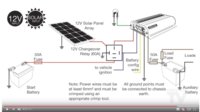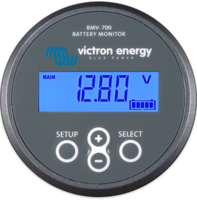I'm planning the 1st fix of electrics for a Kombi to Camper conversion and thought I'd put the plans down here to see if I'm making any major mistakes and see if anyone can answer a few questions i have.
Base Van:

But it still leaves a few questions.
1/ How would I fit a mains hookup into this setup?
2/ Where would the RCDs sit (load side for fridge / lighting circuits I guess but where else) and is this as well as some of the fuses in the diagram or instead of?
3/ What relay to use (the RK1260 unit redarc recommend seems hard to find)?
4/ What gauge wiring to use?
5/ Any need for a diode in the solar panel wiring to prevent backflow or is that covered via the relay?
6/ How / where to integrate battery level monitoring?
I'm going to document my build in a thread in the camper conversions section so it's clearer for others in future but i reckon its always a good idea to check the plans actually make sense before I buy the stuff!
Base Van:
- T6 T32 Kombi 4motion
- Factory Leisure Battery (think this is a 75Ah AGM)
- Factory Parking Heater
- MFU
- a DC-DC charger (as its a Euro6 van)
- a Solar Panel for offgrid use
- Capable of running a 12V fridge 24/7, a few 12v sockets (mostly overnight keeping phones alive), internal LED lights, Webasto heater
- 240V Hookup (it'd be ideal if the hookup charged the leisure battery too) with 1 240v socket (no need for an inverter tho).
- As "fit & forget" as humanly possible (with some basic monitoring of battery levels in place for ease of mind)
- Redarc BCDC1240 mounted under the passenger seat besides the leisure battery. I like this because it has the battery limiter, solar MPPT & DCDC all in one unit which I hope should make wiring / mounting simpler.
- 110Ah AGM Leisure battery (need to find one that fits under seat)
- 100-110W Flexible Solar panel mounted to poptop
- 240V Hookup hidden under rear light panel

But it still leaves a few questions.
1/ How would I fit a mains hookup into this setup?
2/ Where would the RCDs sit (load side for fridge / lighting circuits I guess but where else) and is this as well as some of the fuses in the diagram or instead of?
3/ What relay to use (the RK1260 unit redarc recommend seems hard to find)?
4/ What gauge wiring to use?
5/ Any need for a diode in the solar panel wiring to prevent backflow or is that covered via the relay?
6/ How / where to integrate battery level monitoring?
I'm going to document my build in a thread in the camper conversions section so it's clearer for others in future but i reckon its always a good idea to check the plans actually make sense before I buy the stuff!






